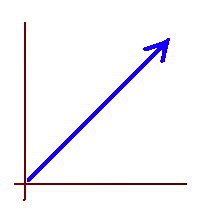From my early days as an undergrad math student, I knew that powers of 2, the numbers of the form 2n, have many properties, and are very important in many areas of mathematics.
However, it was only after I became a math tutor that I realized how common questions involving powers of 2 are in standardized tests.
Before becoming a math tutor I had held positions at colleges and high schools as an associate professor, adjunct professor, math teacher, and teaching assistant. Up to that point I had memorized only the first six natural powers of 2, from 21 to 26, these are:
2, 4, 8, 16, 32, and 64, the powers of 2 that are two-digit numbers.
Later, when I became a math tutor, and I realized how often standardized tests present students with questions involving powers of 2, then I memorized larger powers of 2, up to 212, or:
128, 256, 512, 1024, 2048, and 4096.
It is really a big advantage at test time, for a student to be able to recognize a power of 2 when they see such a number in a problem, because then they can write that number in its exponential format, and use the algebraic rules of exponents to work out the problem’s math easier and faster than dealing with the number in its decimal form, using only arithmetic operations, because the longer route is more time-consuming, and more attention-intensive, therefore riskier and less efficient.
So, if you are preparing for a standardized test, from the CBEST or the ASVAB to the GMAT or the CSET, know your powers of 2. Memorize them well from 21=2 to at least 210=1024, and you’ll increase your chances of scoring a few extra points in the exam.
Memorizing chemical element symbols
-
Here’s something I’ve wondered about before: are there good mnemonics for
chemical element symbols? Some element symbols are based on Latin or German
nam...
3 hours ago




